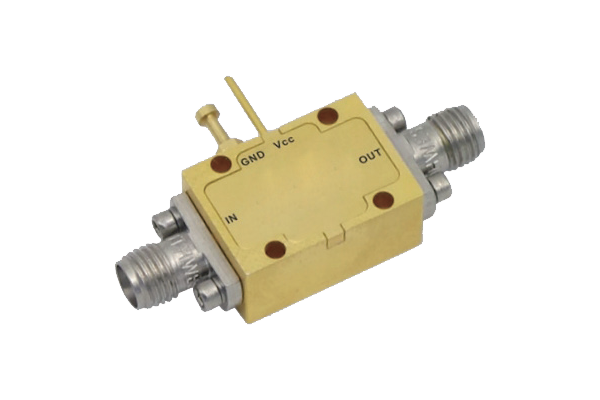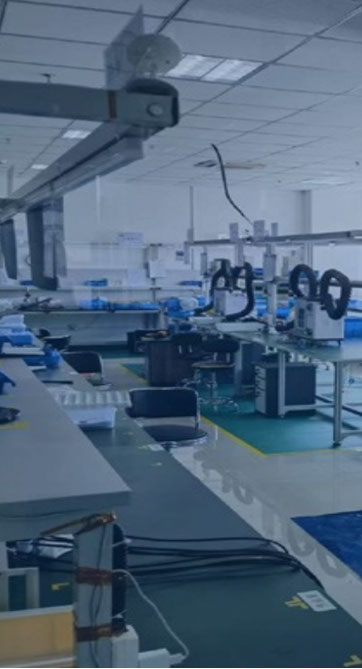
Pin diodes are widely recognized as vital components in RF systems because of their intrinsic functional attributes Their prompt switching characteristics combined with low capacitance and small insertion loss enable efficient use in switching modulation and attenuation scenarios. The primary process that governs PIN diode switching is the modulation of current by varying the applied bias. The bias voltage changes the junction depletion width which in turn influences the device conductance. Modifying the applied bias permits PIN diodes to function at high frequencies with minimal signal distortion
For applications demanding exact timing and control PIN diodes are typically incorporated into complex circuitry They are useful in RF filtering systems for choosing which frequency bands to pass or suppress. Moreover their high-power handling capability renders them suitable for use in amplification division and signal generation stages. The trend toward miniaturized highly efficient PIN diodes has broadened their applicability in modern technologies like wireless communications and radar
Coaxial Switch Architecture and Performance Review
Designing coaxial switches involves a delicate process that must account for many interrelated parameters Performance depends on which switch style is used the operational frequency and insertion loss performance. An efficient coaxial switch should reduce insertion loss while optimizing isolation between ports
Performance studies concentrate on return loss insertion loss and isolation measurements. These metrics are commonly measured using simulations theoretical models and experimental setups. Careful and accurate evaluation is vital to certify coaxial switch reliability in systems
- Analytical methods simulation packages and experimental testing are standard approaches to coaxial switch analysis
- Environmental temperature impedance mismatches and production tolerances can significantly influence switch characteristics
- Novel developments and recent trends in coaxial switch design pursue performance gains alongside miniaturization and power savings
Optimizing Low Noise Amplifier Architectures
Refining the LNA for better performance efficiency and gain underpins superior signal fidelity in systems The process needs precise choice of transistors bias points and topology design. Effective LNA designs minimize internal noise and maximize clean signal gain with little distortion. Modeling simulation and analysis tools play a central role in evaluating the impact of design decisions on noise. Achieving a reduced Noise Figure demonstrates the amplifier’s effectiveness in preserving signal amid internal noise
- Opting for transistors with small inherent noise is a vital design decision
- Properly set optimal and appropriate biasing reduces transistor noise generation
- Topology decisions critically determine how noise propagates in the circuit
Techniques like impedance matching noise cancellation and feedback control can further elevate LNA performance
Signal Switching Using Pin Diodes

Pin diode switch implementations yield flexible efficient routing of RF signals in diverse applications Fast state changes in these devices permit agile dynamic routing of RF signals. PIN diodes provide the dual benefit of small insertion loss and high isolation to protect signals. Use cases include antenna selection duplexer networks and phased array antennas
A PIN diode switch’s operation depends on modulating its electrical resistance with a control voltage. In the off deactivated or open state the diode presents a high resistance path blocking signal flow. A controlled forward voltage lowers resistance and enables unimpeded RF signal flow
- Moreover PIN diode switches combine quick transitions low consumption and compact form factors
Multiple configurable architectures and design schemes of PIN diode switches facilitate complex routing operations. Combining multiple switch elements makes possible dynamic switching matrices enabling flexible routing
Performance Efficacy Assessment of Coaxial Microwave Switches

The evaluation assessment and testing of coaxial microwave switches is essential to confirm optimal operation in complex electronic systems. Diverse factors including insertion reflection transmission loss isolation switching speed and frequency span impact performance. Complete evaluation comprises quantifying these parameters across different operating environmental and test conditions
- Moreover the evaluation must factor in reliability robustness durability and environmental stress tolerance
- In the end the outcome of rigorous evaluation supplies essential valuable and critical information for switch selection design and optimization
Comprehensive Review on Reducing Noise in LNA Circuits
Low noise amplifiers are fundamental in wireless RF systems as they amplify weak signals and reduce noise contributions. This survey offers an extensive examination analysis and overview of approaches to minimize LNA noise. We examine investigate and discuss the fundamental noise sources including thermal shot and flicker noise. We also cover noise matching feedback network techniques and ideal bias strategies to mitigate noise. The review highlights recent progress in LNA design including new semiconductor materials and circuit concepts that lower noise figures. By giving a clear understanding of noise reduction principles and practices this article aims to assist researchers and engineers in developing high performance RF systems
High Speed Switching Roles of PIN Diodes

They show unique remarkable and exceptional characteristics tailored for high speed switching uses Low capacitance and low resistance contribute to very fast switching enabling precise timing control in demanding applications. Additionally their linear response to applied voltage aids in accurate amplitude modulation and switching behavior. This versatility flexibility and adaptability makes them suitable applicable and appropriate for a wide range of high speed applications They find use in optical communications microwave circuitries and signal processing devices and equipment
Integrated Circuit Solutions for Coaxial Switching
Integrated circuit coaxial switch technology marks a significant advancement in signal routing processing and handling within electronic systems circuits and devices. These ICs control manage and direct coaxial signal flow providing high frequency capability with low latency propagation and insertion timing. IC driven miniaturization allows compact efficient reliable and robust designs tailored to dense interfacing integration and connectivity requirements
- Through careful meticulous and rigorous application of such methods engineers can design LNAs with top tier noise performance enabling dependable sensitive systems Through careful meticulous and rigorous application of such methods engineers can design LNAs with top tier noise performance enabling dependable sensitive systems By rigorously meticulously and carefully implementing coaxial switch these techniques practitioners can achieve LNAs with remarkable noise performance for sensitive reliable electronics By meticulously carefully and rigorously adopting these practices designers can deliver LNAs with excellent noise performance supporting reliable sensitive systems
- Application fields encompass telecommunications data communications and wireless networking
- Aerospace defense and industrial automation represent important application areas
- Consumer electronics audio video equipment and test measurement instruments utilize IC coaxial switching
Design Tips for Low Noise Amplifiers in mmWave Bands

LNA design at millimeter wave frequencies faces special challenges due to higher signal attenuation and amplified noise impacts. At these high bands parasitic capacitances and inductances dominate and require careful layout and component selection. Minimizing input mismatch and maximizing power gain are critical essential and important for LNA operation in mmWave systems. Selecting active devices like HEMTs GaAs MESFETs and InP HBTs greatly affects achievable noise figures at these frequencies. Moreover additionally moreover the design implementation and optimization of matching networks is vital to ensure efficient power transfer and impedance match. Attention to package parasitics is crucial as they have potential to harm mmWave LNA performance. Implementing low-loss transmission lines along with proper ground plane design is essential necessary and important for reducing reflection and ensuring bandwidth
Characterization and Modeling of PIN Diodes for RF Switching
PIN diodes operate as essential components elements and parts in diverse RF switching applications. Precise accurate and detailed characterization of such devices is essential for designing developing and optimizing reliable high performance circuits. This requires analyzing evaluating and examining electrical properties including voltage current resistance impedance and conductance. Their frequency response bandwidth tuning capabilities and switching speed latency or response time are likewise measured
Additionally the development of accurate models simulations and representations for PIN diodes is vital essential and crucial for predicting their behavior in RF systems. Various numerous modeling approaches including lumped element distributed element and SPICE models are applicable. Choosing the proper model relies on the specific application requirements and the desired required expected accuracy
State of the Art Techniques for Low Noise Amplifier Design
Designing low noise amplifiers necessitates detailed attention to topology and component choice to reach best noise figures. Recent advances in semiconductor tech have unlocked innovative groundbreaking sophisticated LNA design techniques that diminish noise greatly.
Notable techniques include employing utilizing and implementing wideband matching networks incorporating low-noise transistors with high intrinsic gain and optimizing biasing schemes strategies and approaches. Moreover advanced packaging techniques and effective thermal management significantly contribute to reducing external noise sources. With careful meticulous and rigorous execution of these strategies designers can obtain LNAs exhibiting excellent noise performance for sensitive reliable systems
